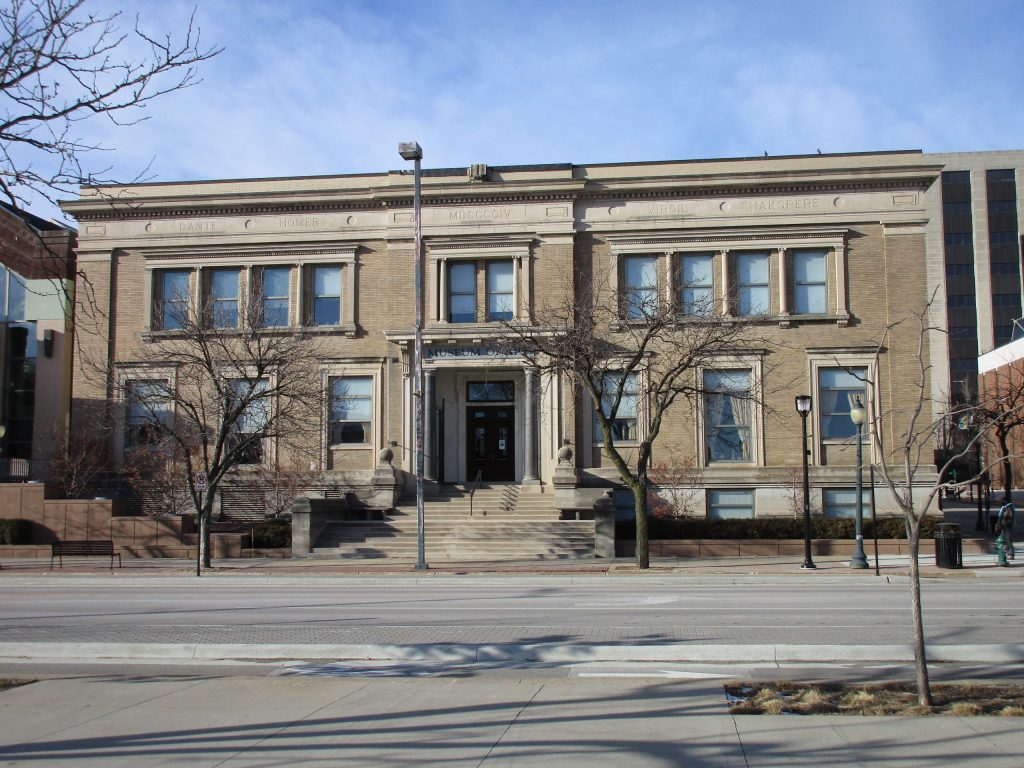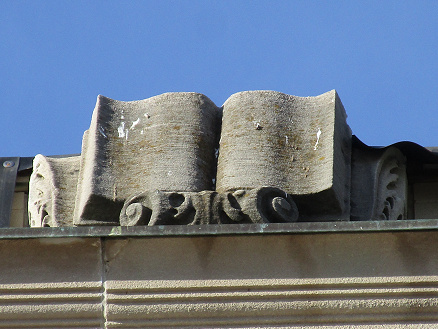
Is it shocking that someone who loves books, writes for a living, and adores architecture would be enamored by a 1905 library? There is an old Carnegie Library in the heart of downtown Cedar Rapids, Iowa. Currently fused into the Museum of Art, the structure has been preserved in its entirety. This building served as a community repository for knowledge, entertainment, and gatherings for 80 years. Come explore why this legacy has been protected.
What’s A Carnegie Library?

America birthed several industry titans during the Industrial Revolution. Names like Astor, Morgan, Vanderbilt, Mellon, Rockefeller, and Carnegie – the names of capitalists (and their heirs) that are emblazoned on iconic buildings and businesses that still exist over 100 years later. Andrew Carnegie, a Scottish immigrant whose fortune started in a Pittsburgh steel mill, was once the richest man in America.
Carnegie grew to believe that wealth shouldn’t be hoarded but invested in the community. Let me acknowledge that he was a complicated, ruthless entrepreneur – there are several 700+ page biographies detailing his cutthroat business dealings. But he chose libraries as a way to funnel his prosperity into public institutions.

Carnegie invested upwards of $60 million (in early 20th century dollars) to fund nearly 1,700 libraries across the U.S. from 1886 to 1919 upon his death. There are also over 600 Carnegie libraries in the U.K. as well as others across the globe. Each site had to apply to receive a construction grant and demonstrate how they would provide, maintain, and fund this civic resource for years to come.
Iowa is home to 101 Carnegie libraries – approximately 5% of the U.S. Carnegie libraries (1). Only five others states had over 100 grants: California, Illinois, Indiana, New York, and Ohio (2). Go Iowa!
“The active response of Iowa’s communities meant that Iowa received the 4th highest number of grants nationwide, and built the 6th highest number of public libraries. Iowa also acquired the 3rd highest number of academic libraries during the period of Carnegie’s program” (1).

In 1892, Fairfield was not only the first recipient of a Carnegie in Iowa but the first anywhere west of Pittsburgh and still stands today (3). Of the 100+ libraries built here, only 8 have been torn down. Nearly half are still libraries while the others have been repurposed (1). Why was Iowa so successful at attracting Carnegie money?
“In 1873, Iowa had become the 10th state to enact legislation that allowed towns to establish and maintain public libraries through taxation. In 1897, the state had granted partial suffrage to women allowing them to vote on ‘yes’ and ‘no’ issues such as the establishment of a public library. By 1900, Iowa’s 28th General Assembly created the Iowa Library Commission which was responsible for encouraging library growth across the state” (3).
The Cedar Rapids Carnegie Library
Cedar Rapids has the fourth oldest Carnegie library in Iowa, with its grant awarded in 1901 and construction finalized in 1905 (4). The building sits in the heart of downtown across from Greene Square Park. This public hub was once home to Washington High School, the Union Depot train station, and the 1869 First Presbyterian Church that still exists today. This tells you that the library’s prominent location was intentional.


There is a large sculpture of an open book at the top.
The two-story exterior is yellow brick and done in an understated architectural style. There are some light Greek Revival touches, like the dentils and Corinthian columns. These are carried through the interior as well. Can you see the symmetry here?


Immediately below the roof perimeter is a band of names from classic authors: Homer, Dante, Virgil, Shakespeare, Irving, Goethe, Komensky (nod to the Czech population already established in Cedar Rapids by this time), and Bjørnson, who won the Nobel Prize in Literature in 1903.


Though Carnegie libraries exhibit a huge range of designs, most are a basic rectangle with a large, central opening. The Cedar Rapids library was designed by Josselyn & Taylor, local architects whose legacy can be seen over at the Brucemore historic estate.
“In almost every situation, an architect from outside the community was hired to design the buildings that were intended to be as modern and stylish as any other being built across the country. The libraries were heralded as symbols of community pride and achievement” (4).
It’s a testament to the quality and style of Carnegie libraries that so many have been preserved despite being over a century old. They are so easy to spot as you drive through a small town. They are often an architectural outlier, with maybe a nearby old school or post office to mark the turn of the century.


I am personally besotted by the interior. I love that the great room remains a reading place for art books. It is so inviting! I’m enchanted by the deep green color (can any lifelong Cedar Rapidian tell me if that’s original?). You can easily envision how stacks of shelves filled this space.

The domed stained glass ceiling is also a gorgeous feature, displaying that same emerald hue. It’s so interesting to see how public buildings from this era lavished attention on visual aesthetics. Even a minimally adored building is richly decorated compared to our modern standards. Can you imagine a civic facility commissioning a ceiling like this today? We just don’t see art as essential in the same way.

Speaking of art, these dreamy bas-reliefs dancers is a series called the Bacchanale Frieze and was completed in 1924 by Malvina Hoffman. The artist was transfixed by the performances of the famous ballet dancer Anna Pavlova (5). Hoffman studied under Rodin (yes, Rodin of “The Thinker” fame) and left her mark as one of the few female sculptors of her generation.

The 24 plasters display such realism and movement – I’m drawn to them every time I walk through this room. And because the old library is part of the Art Museum’s gift shop area, you can see them for free. Take a step back into history and cozy up with an art book, becoming a library patron once again.
References
- https://dsps.lib.uiowa.edu/clip/
- https://en.wikipedia.org/wiki/List_of_Carnegie_libraries_in_the_United_States
- https://dsps.lib.uiowa.edu/clip/public-libraries/
- https://dsps.lib.uiowa.edu/clip/library/cedar-rapids/
- https://www.facebook.com/permalink.php?id=336222130896&story_fbid=10157069393480897



